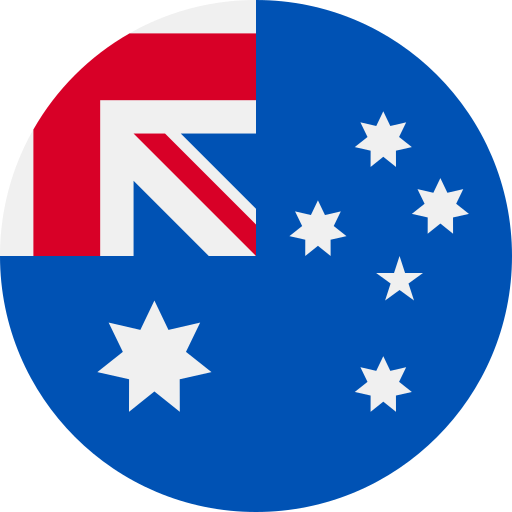Key Takeaways
- Unique Features: Australian English is distinguished by its unique slang, pronunciation, and idiomatic expressions that reflect Australia’s cultural identity.
- Historical Evolution: The development of Australian English began in the late 18th century with British colonization, influenced by Indigenous languages and immigrant communities.
- Pronunciation Variations: Characterized by a non-rhotic accent, Australians often do not pronounce the ‘r’ at the end of words, setting it apart from American and British English accents.
- Distinct Vocabulary: Key vocabulary differences include terms like “arvo” (afternoon) and “petrol” (gas), showcasing Australia’s unique linguistic landscape.
- Cultural Nuances: Understanding Australian idioms such as “fair dinkum” (genuine) enhances communication and appreciation for local culture.
- Grammar Differences: Sentence structure and tense usage in Australian English align more closely with British norms but feature distinct colloquialisms that are important for effective communication.
Ever wondered why Australian English sounds so different from American or British English? You’re not alone! With its unique slang, pronunciation, and idioms, Australian English offers a fascinating glimpse into the culture and identity of its speakers.
Overview of Australian English
Australian English showcases unique features that distinguish it from other English varieties. Its slang, pronunciation, and idiomatic expressions reflect the rich cultural tapestry of Australia.
Historical Context
Australian English developed in the late 18th century with British colonization. Early settlers brought various dialects, predominantly from England, which merged over time. Influences from Indigenous languages and immigrant communities enriched its vocabulary and usage. Understanding this history helps you appreciate how Australian English evolved into a distinct variety.
Key Characteristics
Australian English has several notable characteristics:
- Pronunciation: The accent varies regionally but generally features a non-rhotic quality, meaning the “r” at the end of words often isn’t pronounced.
- Slang: Unique terms like “arvo” for afternoon or “bikkie” for biscuit are commonplace. These terms create a sense of belonging among speakers.
- Idioms: Phrases like “fair dinkum” (genuine) or “she’ll be right” (everything will be okay) convey attitudes integral to Australian culture.
- Vocabulary: Differences exist in everyday language compared to American or British English; for instance, Australians use “boot” instead of trunk and “petrol” instead of gas.
These characteristics illustrate how Australian English serves as a reflection of Australia’s identity and values while also highlighting its distinctiveness within the broader context of global English varieties.
Comparisons with Other English Varieties
Australian English shares similarities and differences with other varieties of English, shaping communication styles across the globe. Understanding these distinctions can enhance your appreciation for each variant.
British English
British English features a range of accents and dialects that vary significantly from Australian English. Pronunciation often differs; for example, Australians use non-rhoticity, which means they don’t pronounce the ‘r’ at the end of words like “car.” In contrast, many British speakers articulate this sound. Vocabulary also varies: while Australians might say “biscuit” or “boot,” Brits may refer to them as “biscuit” and “car boot.” Slang terms are another area where Australian English stands out with unique expressions like “arvo” (afternoon) that aren’t commonly recognized in Britain.
American English
American English is characterized by its distinct pronunciation and spelling conventions compared to Australian usage. For instance, while both varieties utilize ‘color,’ Australians prefer ‘colour.’ The accent also plays a crucial role; Americans typically pronounce their ‘r’s more prominently than Australians do. Furthermore, slang expressions differ greatly—Americans might say “dude” frequently while Australians opt for terms like “mate.” These variations reflect cultural influences that shape language use on either side of the Pacific Ocean.
Canadian English
Canadian English often aligns closely with American norms but incorporates elements from British traditions as well. Pronunciation can exhibit similarities to both American and British accents, making it somewhat unique within North America. Canadian vocabulary sometimes mirrors Australian terms; for instance, Canadians may use “washroom” similarly to how Australians use “loo.” However, certain idioms remain distinct—Canadians often employ phrases influenced by both cultures yet retain their identity through local slang like “eh.”
Understanding these comparisons can deepen your grasp of language nuances within different contexts—a valuable asset whether you’re navigating conversations or exploring content creation opportunities across various markets.
Phonetics and Pronunciation
Phonetics and pronunciation play a significant role in differentiating Australian English from other varieties. Understanding these distinctions can enhance your grasp of the language’s unique characteristics.
Vowel Sounds
Australian English exhibits distinct vowel sounds that set it apart from British and American English. Notably, the diphthongs in words like “goat” and “face” sound different, often described as more centralized compared to their counterparts in other varieties. For example, Australians might pronounce “mate” with a broader vowel than Americans do. This variation contributes to the unique rhythm of Australian speech, making it instantly recognizable.
Consonant Differences
Consonants in Australian English also show notable differences. The non-rhotic nature means that ‘r’ at the end of words isn’t pronounced, leading to a softer sound compared to American English. In phrases like “car” or “far,” you’ll notice this subtlety; it’s less emphasized than in other dialects. Additionally, certain consonant clusters may be pronounced differently, affecting how words are understood by speakers of various English languages.
These phonetic features reflect cultural nuances within Australia and influence communication styles across contexts, enriching interactions whether you’re engaging with local content or connecting with voice talent for projects targeting Australian audiences.
Vocabulary and Expressions
Australian English boasts a rich variety of vocabulary and expressions that set it apart from other English forms. Understanding these can enhance communication, especially if you’re engaging with Australian voice talent or targeting this audience in your projects.
Unique Australian Slang
Australian slang adds color and character to the language. Terms like “arvo” for afternoon and “bikkie” for biscuit pop up frequently in casual conversations. Other examples include “brekkie” for breakfast, “thong” for flip-flop, and “chook” for chicken. These terms reflect not just the culture but also a unique identity among speakers. Familiarity with such slang can make interactions feel more authentic, whether you’re collaborating with local voice artists or creating content aimed at an Australian audience.
Commonly Used Terms
Certain words differ significantly in usage compared to American or British English. For instance, Australians say “boot” instead of trunk when referring to car storage space and use “petrol” rather than gas as fuel. Additionally, you’ll hear phrases like “fair dinkum,” meaning genuine or real, which might leave non-Australian speakers puzzled. Recognizing these terms helps bridge cultural gaps and creates smoother connections during voiceover projects that require local flavor or authenticity.
Embracing the vocabulary and expressions unique to Australian English enriches your understanding of the language landscape, making it easier to connect with audiences through effective communication strategies.
Grammar and Usage
Australian English exhibits distinct grammar and usage patterns that set it apart from other varieties, especially American and British English. Understanding these differences enhances effective communication, particularly when working with local voice talent or creating content for Australian audiences.
Sentence Structure
Sentence structure in Australian English aligns closely with British conventions but includes unique colloquialisms. You’ll find more frequent use of the subjunctive mood in formal contexts compared to American English. For instance, Australians might say “If I were you” rather than “If I was you.” Additionally, questions often end with a rising intonation, which can signal uncertainty or invite confirmation. This subtle shift influences how messages are received by listeners, making it essential for voice artists to grasp these nuances when delivering lines.
Tense Usage
Tense usage varies between Australian and other forms of English, particularly concerning past actions and future intentions. Australians tend to prefer the simple past tense over the present perfect tense used commonly in British English. For example, while someone might say “I’ve eaten lunch,” an Australian would likely state “I ate lunch.” Future intentions may also differ; Australians often use “I’m gonna” instead of “I will,” giving a more casual tone to conversations. Voice actors need to be aware of these distinctions as they adapt their performances for different audiences, ensuring clarity and relatability in their delivery.
Conclusion
Understanding the nuances of Australian English enriches your appreciation for its unique character. From slang to pronunciation and grammar, each element reflects a vibrant culture that sets it apart from other English varieties. Whether you’re collaborating with local voice talent or creating content for an Australian audience, embracing these differences fosters stronger connections.
By recognizing the distinct vocabulary and expressions used in Australia, you can ensure clarity and relatability in communication. This knowledge not only enhances interactions but also deepens your insight into the diverse landscape of English around the world. Exploring these variations opens up new perspectives on language and culture, making your experience all the more rewarding.
Frequently Asked Questions
What are the key features of Australian English?
Australian English is known for its unique slang, non-rhotic pronunciation, and idiomatic expressions. Common terms include “arvo” (afternoon) and “bikkie” (biscuit). These features reflect Australia’s cultural identity and provide insight into how Australians communicate.
How did Australian English develop?
Australian English began to form in the late 18th century during British colonization. It evolved by incorporating elements from Indigenous languages and immigrant communities, resulting in a distinct variety that captures Australia’s diverse culture.
How does Australian English differ from British and American English?
While both British and American English have their own pronunciations and vocabularies, Australian English stands out with its unique slang like “brekkie” for breakfast. Phonetics also vary; Australians often use non-rhotic pronunciation compared to British accents.
Why is understanding Australian slang important?
Knowing Australian slang enhances communication when engaging with local audiences or content creators. Terms like “mate” or “chook” may not be familiar to outsiders but are essential for connection in professional settings, especially in voiceover work.
What grammatical differences exist in Australian English?
Australian English shares sentence structure with British conventions but frequently uses unique colloquialisms. Notably, it prefers simple past tense over the present perfect tense commonly found in British usage, which can affect clarity in communication.
Are there any specific vocabulary differences between these varieties of English?
Yes! For instance, Australians say “boot” instead of trunk and “petrol” instead of gas. Recognizing these differences fosters smoother interactions across cultures and helps bridge gaps when working on projects targeting an Australian audience.







